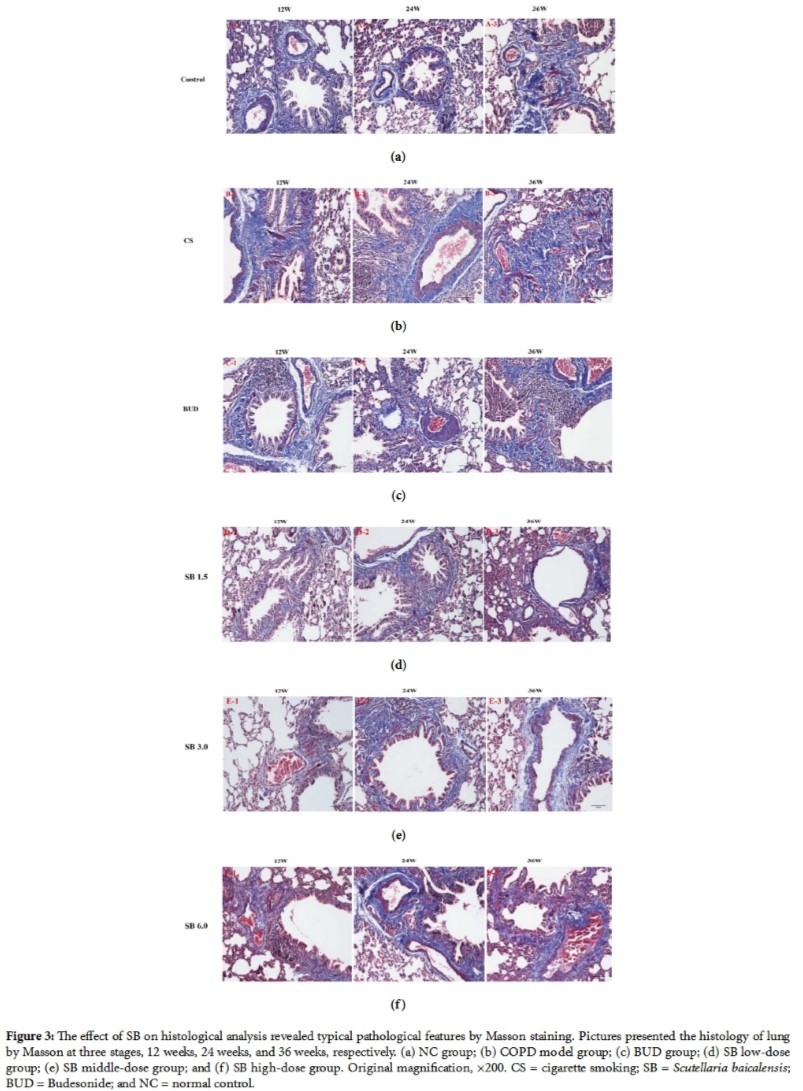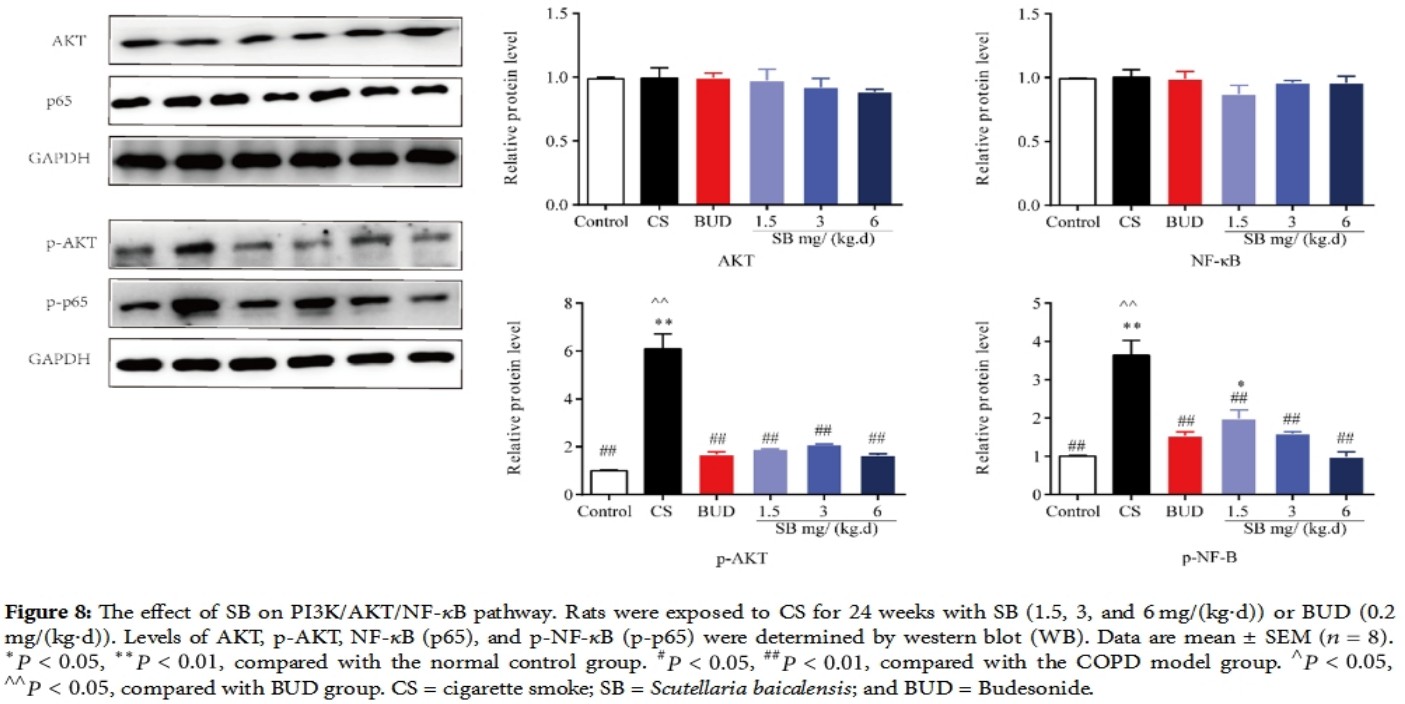Scutellaria baicalensis Attenuates Airway Remodeling via PI3K/Akt/NF-κB Pathway in Cigarette Smoke Mediated-COPD Rats Model
Fei Xu#, Jinpei Lin#, Wenqiang Cui, Qing Kong, Qiuping Li, Lulu Li, Ying Wei*, and Jingcheng Dong*
Evidence-Based Complementary and Alternative Medicine. Volume 2018, Article ID 1281420, 12 pages
Background
Scutellaria baicalensis (SB) is commonly used in traditional Chinesemedicine for chronic inflammatory diseases.This study aims to investigate the effects of the early intervention with SB on airway remodeling in a well-established rat model of COPD induced by cigarette smoking.
Methods
COPD model in Sprague Dawley (SD) rats were established by exposing them to smoke for 6 days/week, for 12 weeks, 24 weeks, or 36 weeks. Meanwhile, rats were randomly divided into normal control group, model group, Budesonide (BUD) group, and the SB (low, middle, and high) dose groups with 8 rats in each group and 3 stages (12 weeks, 24 weeks, and 36 weeks). After treatment, the pulmonary function was evaluated by BUXCO system and the morphology changes of the lungs were observed with HE and Masson staining. The serum IL-6, IL-8, and IL-10 and TNF-alpha, TGF-beta (TGF-beta1), MMP-2, MMP-9, and TIMP-1 levels in BALF were detected by ELISA-kit assay. The protein expression levels of AKT and NF-kappaB (p65) were determined by western blot (WB).
Results
The oral of SB significantly improved pulmonary function (PF) and ameliorated the pathological damage and attenuated inflammatory cytokines infiltration into the lungs. Meanwhile, the levels of TGF-beta, MMP-2, MMP-9, and TIMP-1 were partially significantly decreased. The levels of PI3K/AKT/NF-kappaB pathway were also markedly suppressed by SB.
Conclusions
SB could significantly improve the condition of airway remodeling by inhibiting airway inflammation and partially quenching TGF-beta and MMPs via PI3K/AKT/NF-kappaB pathway.




